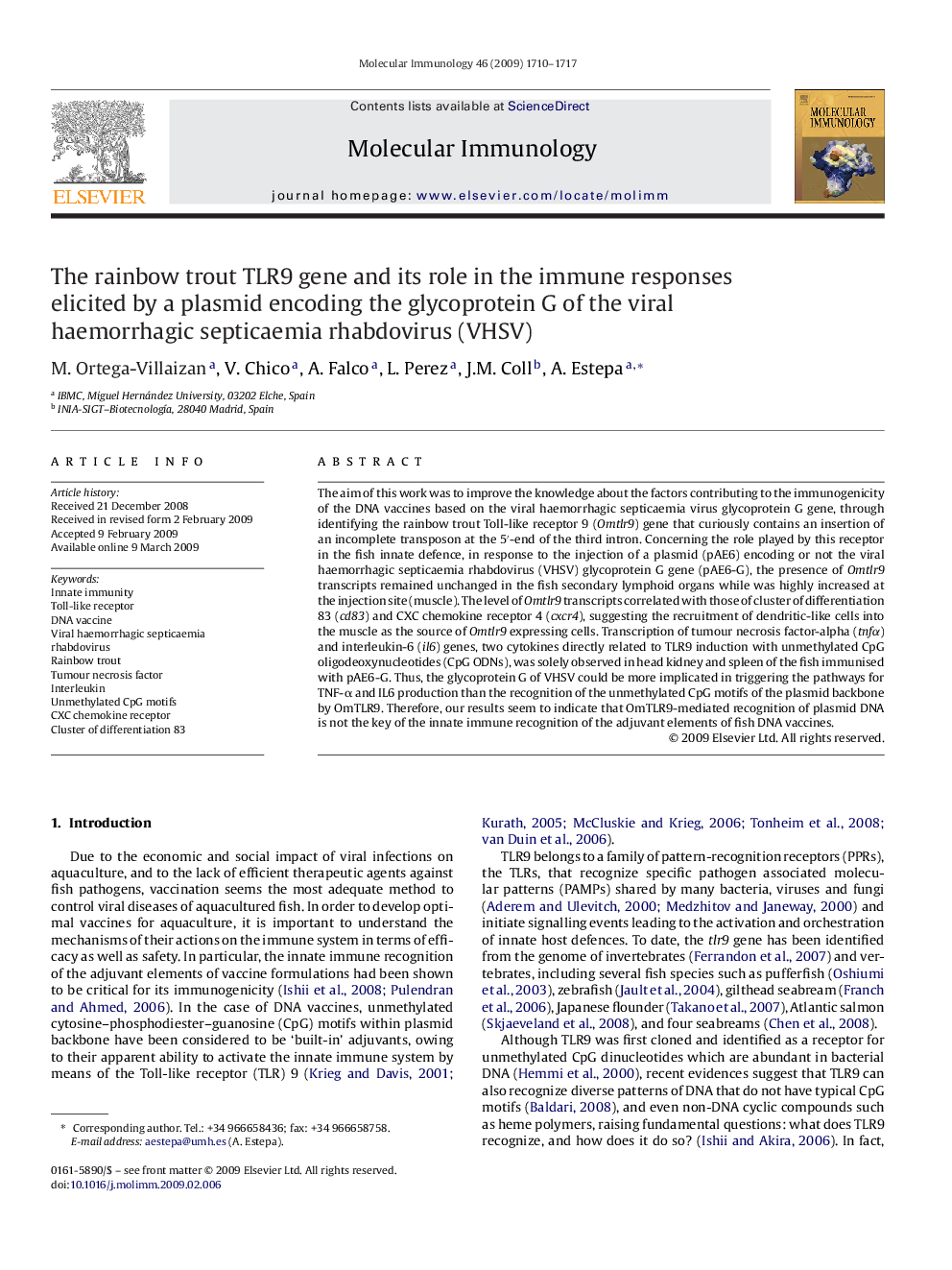| Article ID | Journal | Published Year | Pages | File Type |
|---|---|---|---|---|
| 2832193 | Molecular Immunology | 2009 | 8 Pages |
The aim of this work was to improve the knowledge about the factors contributing to the immunogenicity of the DNA vaccines based on the viral haemorrhagic septicaemia virus glycoprotein G gene, through identifying the rainbow trout Toll-like receptor 9 (Omtlr9) gene that curiously contains an insertion of an incomplete transposon at the 5′-end of the third intron. Concerning the role played by this receptor in the fish innate defence, in response to the injection of a plasmid (pAE6) encoding or not the viral haemorrhagic septicaemia rhabdovirus (VHSV) glycoprotein G gene (pAE6-G), the presence of Omtlr9 transcripts remained unchanged in the fish secondary lymphoid organs while was highly increased at the injection site (muscle). The level of Omtlr9 transcripts correlated with those of cluster of differentiation 83 (cd83) and CXC chemokine receptor 4 (cxcr4), suggesting the recruitment of dendritic-like cells into the muscle as the source of Omtlr9 expressing cells. Transcription of tumour necrosis factor-alpha (tnfα) and interleukin-6 (il6) genes, two cytokines directly related to TLR9 induction with unmethylated CpG oligodeoxynucleotides (CpG ODNs), was solely observed in head kidney and spleen of the fish immunised with pAE6-G. Thus, the glycoprotein G of VHSV could be more implicated in triggering the pathways for TNF-α and IL6 production than the recognition of the unmethylated CpG motifs of the plasmid backbone by OmTLR9. Therefore, our results seem to indicate that OmTLR9-mediated recognition of plasmid DNA is not the key of the innate immune recognition of the adjuvant elements of fish DNA vaccines.
